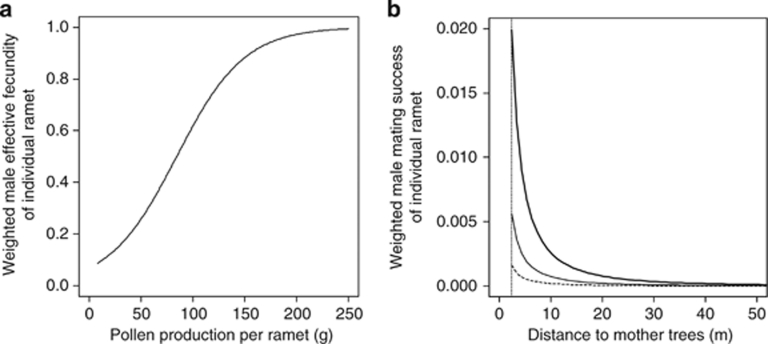Figure 4.
Predicted values of weighted male effective fecundity (a) and mating success (b) of individual ramets. (a) The effects of pollen production on the effective fecundity, weighted according to the logistic function: f=1/[1+exp(c1+c2 × x)], where x represents the pollen production per ramet for a clone, and c1 and c2 correspond to the coefficients of male fecundity effects on mating success. In this study, c1=2.58, c2=−0.03 (see Table 2). The curve started from the minimum observed pollen production per ramet in the seed orchard. (b) The effects of distances and directions to mother trees. Thick, thin and dashed lines represent the relative mating success in azimuth directions of maximum (313°), moderate (43° and 223°) and minimum (133°) dispersal. The dotted vertical line indicates the minimum distance between trees (that is, 2.3 m) in the seed orchard. Optimized parameters in the best-fitting model were used (see Table 2).

